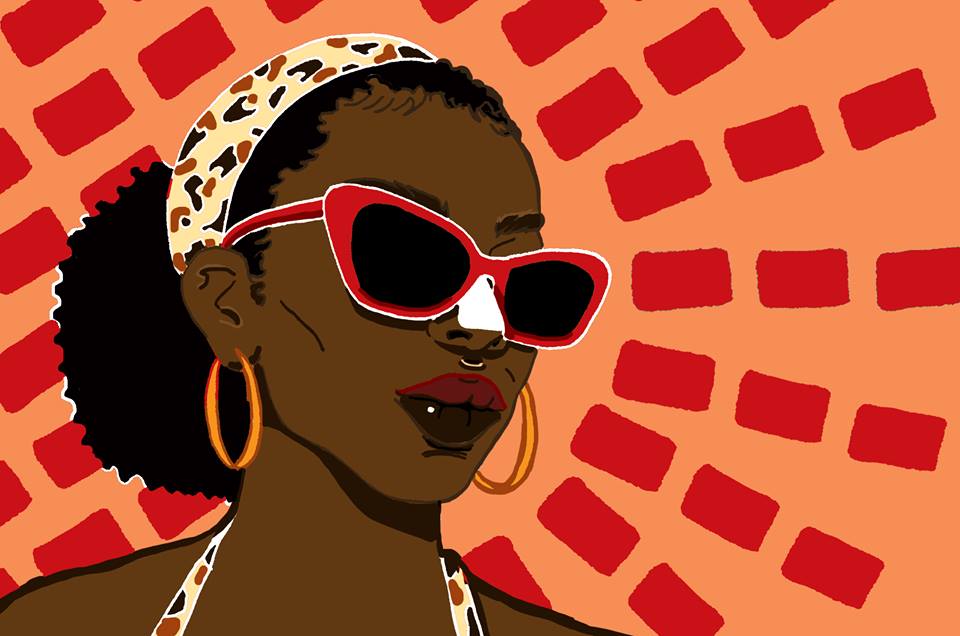
That time when I mistook my hair conditioner for sun cream… and my Bobbi-Brown-Walnut complexion learned that sunburn is real! This summer, while packing for a mini-trip to Tenerife I had the stroke of genius to store my liquids in travel bottles to meet airport restrictions, so naturally, I ended up with three white liquids in similar looking bottles and concluded that it was fairly obvious which product was which – different smells, different consistencies right? – no biggie.
If we fast-forward to day one of the holiday, I had now been lazing on the beach chair by the pool for about three hours (with occasional dips in the pool) when I started to get this strange sensation on my legs and shoulders – a little bit like a tingling, frying sensation.I took the initiative to repeatedly apply “sun-cream” and put up the parasol for some shade. Somehow, this didn’t seem to be working and I could see mild areas of redness materialising on my right leg. By early evening this sensation had turned into actual pain and the idea that my richly-melanated skin might be burning had begun to sink in so I went indoors.
“Two weeks later and I’m still experiencing the aftermath of the sunburn”
After I finished washing my hair that evening, I reached for what I believed to be the “conditioner” and applied it to my hair but this time it felt thin and grainy, not the usual thick and smooth consistency I was used to. Lo and behold it was actually my Nivea SPF 30 sunscreen meaning that I had spent the day applying my oil infused rinse-out hair conditioner on my skin! Two weeks later and I’m still experiencing the aftermath of the sunburn – my skin is still peeling.
Yes, it’s true that melanin gives a level of in-built sun protection and it’s true, to an extent, that the richer the melanin the better this protection is – up to SPF13.4 to be precise. It’s also true, however, that many black people tend to shy away from using sun cream. Alas, sometimes the melanin is just not enough and here’s why:
– Although less likely than those of lighter skin tones, black people can and do also get sunburned. If you’ve ever noticed your skin becoming red, painful, swollen or peeling after sun exposure then it’s quite likely you’ve been sunburnt.
– Skin cancers e.g. melanoma and squamous cell carcinoma are much rarer in darker skin types but they do occur and actually research shows that skin cancer is often detected later and often has poorer survival rates in black people.
– Together with other forms of sun protection e.g. hats, sunglasses, shade and protective clothing, applying the appropriate sun protection in the correct way protects us from the harmful effects of ultraviolet (UV) radiation. Some of the benefits include a reduced risk of the damaging effects of UVB rays e.g. skin cancers and sunburn and a reduced risk of premature ageing (photoageing) caused primarily by UVA rays:
- Fine wrinkles
- Loss of skin elasticity
- Hyperpigmentation
When looking for a good sunscreen, you’re looking for one that has both UVA and UVB protection and is also water resistant. The level of protection offered is measured using the star-rating system for UVA and and SPF measurement for UVB rays. Many people avoid sunscreens because of the ashy white or blue tinge some formulations give. However, skin care technology has come a long way and sunscreens are now available in all sorts of ingenious formulations e.g. combined with foundation/moisturizers, sunscreen oils, mousses, serums, gels and sprays. In fact, one of the newest and most innovative designs are the sunscreens that come as a setting spray so that you can even apply these over make-up!
The big question is “when to apply sunscreen”. If you want to get technical, the UV index can be used to determine when you’re most at risk from the sun regardless of whether it’s a sunny day or not and like everything else there’s an app for it – e.g. the World UV app. But if you want to keep it simple, NHS Choices, recommends that the sun is strongest in the UK between March and October typically between the hours of 11am and 3pm.
So now you’ve had a concise low-down on sun protection, if I catch you in the sun without it, I’ll be throwing some shade (pun intended) and suncream your way!








